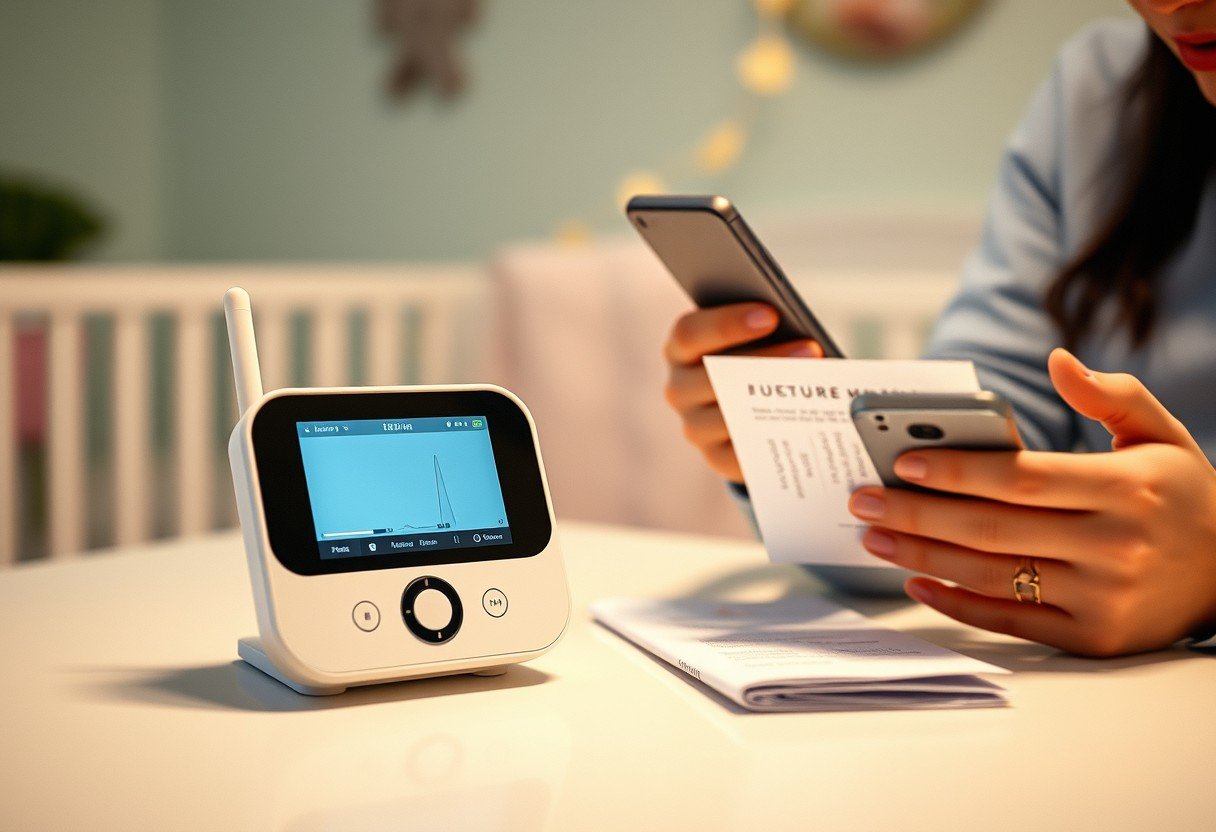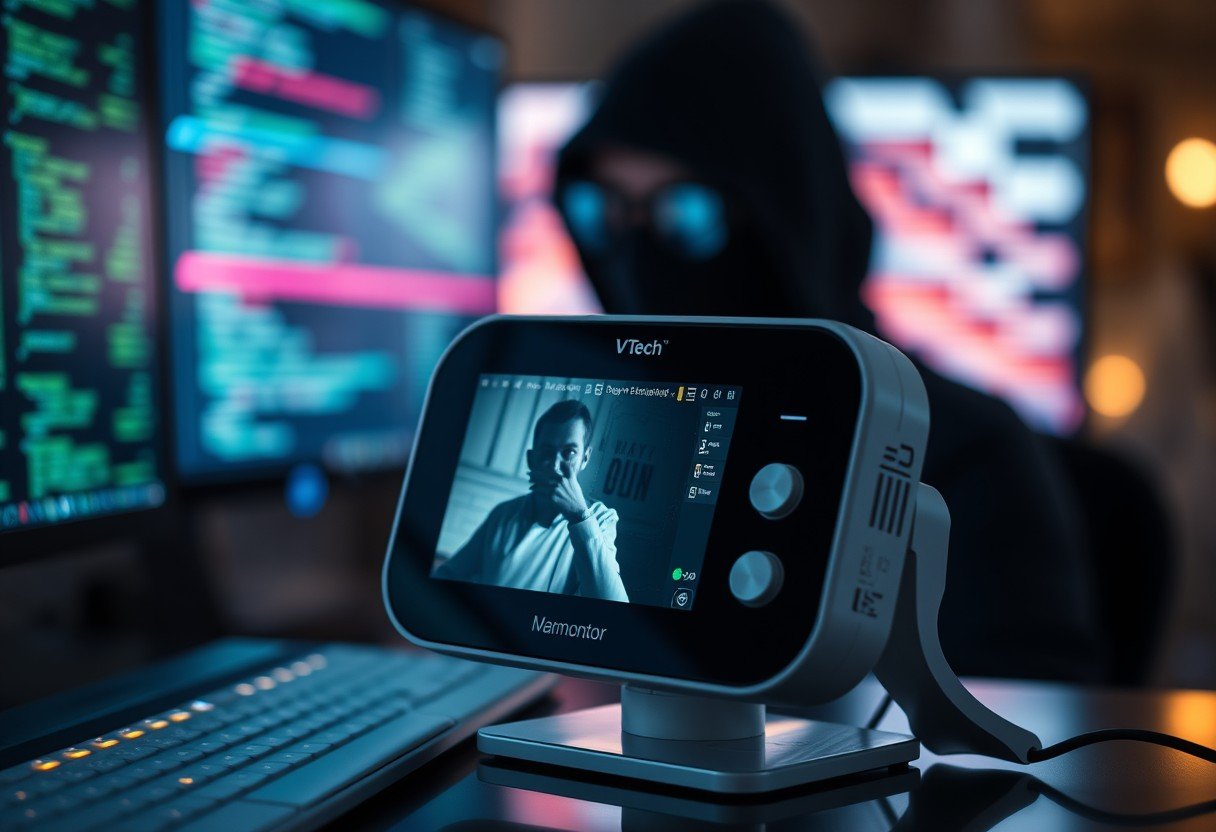iBaby monitors are a great tool for keeping an eye on your little one, but technology can sometimes be frustrating. If you’re dealing with connectivity drops, poor video quality, or short battery life, you’re not alone. This guide will walk you through the most common iBaby monitor problems and provide simple, effective solutions to restore your peace of mind and ensure your baby’s safety is always in clear view.
Common iBaby Monitor Problems You Might Face
Understanding the issues that can pop up with your iBaby monitor is the first step toward fixing them. Many parents experience similar challenges that can disrupt the monitoring experience and cause unnecessary stress.
From frustrating Wi-Fi disconnects to a battery that seems to drain in minutes, these problems are quite common. You might also notice that the iBaby app occasionally crashes or that the video quality isn’t as sharp as you’d like, especially in low light.
Knowing that these are shared experiences can be reassuring. The good news is that most of these issues have straightforward solutions that don’t require you to be a tech expert. Whether it’s a simple settings adjustment or repositioning your router, you can often get your monitor working perfectly again in just a few minutes.
How to Fix Wi-Fi and Connectivity Issues
Connectivity problems are perhaps the most frequently reported issue with iBaby monitors. A camera that keeps going offline or a laggy video feed can defeat the purpose of having a monitor in the first place. These problems usually stem from a weak or unstable Wi-Fi signal.
Your home network is busy. Other devices like laptops, smart TVs, and phones are all competing for bandwidth, which can impact your monitor’s performance. Interference from other electronics, such as microwaves or cordless phones, can also disrupt the signal.
Before trying more complex solutions, start with the basics. A simple restart of both your monitor and your Wi-Fi router can often solve the problem by refreshing the connection. If issues continue, try these steps:
- Check Your Router’s Frequency: Most iBaby monitors work best on a 2.4GHz Wi-Fi network, not a 5GHz network. Check your router settings to ensure the monitor is connecting to the correct band.
- Move the Router Closer: Physical distance and obstructions like thick walls can weaken the signal. Try moving your monitor closer to the router or vice versa.
- Use a Wi-Fi Extender: If moving the router isn’t an option, a Wi-Fi extender can boost the signal in the nursery and provide a more stable connection for your monitor.
Ensuring your monitor has a strong, dedicated connection is key to reliable streaming. Minimizing the number of other devices using the network, especially during nap time, can also significantly improve stability.
Boosting Your Monitor’s Battery Performance
If you use your iBaby monitor cordlessly, you may find that the battery life doesn’t last as long as you need it to. A battery that dies quickly limits the monitor’s portability and can be a major inconvenience. Fortunately, you can take steps to extend the time between charges.
The monitor’s features, such as video streaming, night vision, and sound alerts, all consume power. The higher the video resolution and screen brightness, the faster the battery will drain. Think of it like your smartphone—the more you use it, the quicker the battery depletes.
To get the most out of each charge, try adjusting the device’s settings. Turning off features when they aren’t necessary can make a big difference. For example, you can lower the screen brightness or turn off continuous video streaming when you only need to listen for audio cues. Keeping the device’s firmware updated also helps, as manufacturers often include energy-saving improvements in new software releases.
Solving Poor Audio and Video Quality
When you check on your baby, you want to see a clear picture and hear every sound. Choppy video or muffled audio can make it difficult to know if your baby is okay. Most of the time, poor audio and video quality are linked to the same culprit as connectivity issues: your Wi-Fi network.
A weak signal strength or insufficient internet speed can prevent the monitor from streaming high-quality video and audio smoothly. The distance between the monitor and the router, as well as physical barriers, can significantly degrade performance. For optimal quality, a strong and stable Wi-Fi connection is non-negotiable.
Positioning the camera is also important. Ensure the lens is clean and free of dust for the clearest picture. If you’re having issues with night vision, check that there are no bright light sources in the room causing glare, and adjust the monitor’s angle to better capture the crib area.
Are iBaby Monitors Secure? What You Need to Know
With any device connected to the internet, especially one in your baby’s room, security is a top priority. Concerns about unauthorized access or hacking are valid, and it’s essential to take steps to protect your family’s privacy.
iBaby monitors, like other smart devices, collect sensitive data, including video and audio recordings. To safeguard this information, you need to be proactive about security. This starts with securing your home Wi-Fi network with a strong, unique password.
Here are some best practices for securing your iBaby monitor:
- Use a Strong Password: Create a complex and unique password for both your iBaby app account and your Wi-Fi network.
- Enable Encryption: If your router has encryption options like WPA2 or WPA3, make sure they are enabled for the highest level of security.
- Update Firmware Regularly: Manufacturers release firmware updates to patch security vulnerabilities. Always install updates as soon as they become available to protect your device from potential threats.
Worthwhile Alternatives to iBaby Monitors
If you’ve tried troubleshooting and are still not satisfied with your iBaby monitor, it might be time to explore other options. The baby monitor market is filled with excellent alternatives that may offer different features or better suit your family’s needs.
When looking for a new monitor, consider what features are most important to you. Do you need sleep tracking, breathing movement detection, or integration with other smart home devices? Brands like Nanit, Owlet, and Motorola offer a range of models with various functionalities.
Comparing features and prices can help you make an informed decision. While some models have a higher upfront cost, they may offer advanced features that provide greater peace of mind and long-term value.
| Model | Key Features | Approximate Price |
|---|---|---|
| Nanit Plus | HD video, sleep tracking, breathing movement detection | $299.99 |
| Owlet Cam | HD video, night vision, heart rate monitoring (with Smart Sock) | $199.99 |
| Motorola MBP50-G2 | Wi-Fi connectivity, remote pan/tilt, temperature monitoring | $149.99 |
Frequently Asked Questions about iBaby Monitors
Why does my iBaby monitor keep saying ‘Camera Offline’?
The ‘Camera Offline’ message typically means there’s a problem with the connection between the monitor and your Wi-Fi. First, check if the monitor is powered on, then restart both your monitor and your router. This simple step often resolves the issue by re-establishing the connection.
What can I do if the iBaby video feed is lagging?
A lagging video feed is usually caused by a slow or unstable internet connection. Try moving the monitor closer to your Wi-Fi router or reduce the video resolution in the iBaby app settings. Using a Wi-Fi extender can also help improve the signal strength in your baby’s room.
How do I fix no sound on my iBaby monitor?
If you can’t hear any sound, first check the volume levels in the iBaby app and on your phone or tablet. Ensure the microphone on the monitor is not physically obstructed. If the problem persists, restarting the app and the monitor should be your next step.
My iBaby monitor won’t connect to Wi-Fi, what should I do?
Ensure you are connecting to a 2.4GHz Wi-Fi network, as most monitors do not support 5GHz. Double-check that you have entered the correct Wi-Fi password. If it still won’t connect, perform a factory reset on the monitor and try the setup process again from the beginning.
Are firmware updates for my iBaby monitor really necessary?
Yes, absolutely. Firmware updates are crucial because they often include important security patches that protect your device from vulnerabilities. They can also improve performance, fix bugs, and sometimes even add new features to your monitor.








Leave a Comment